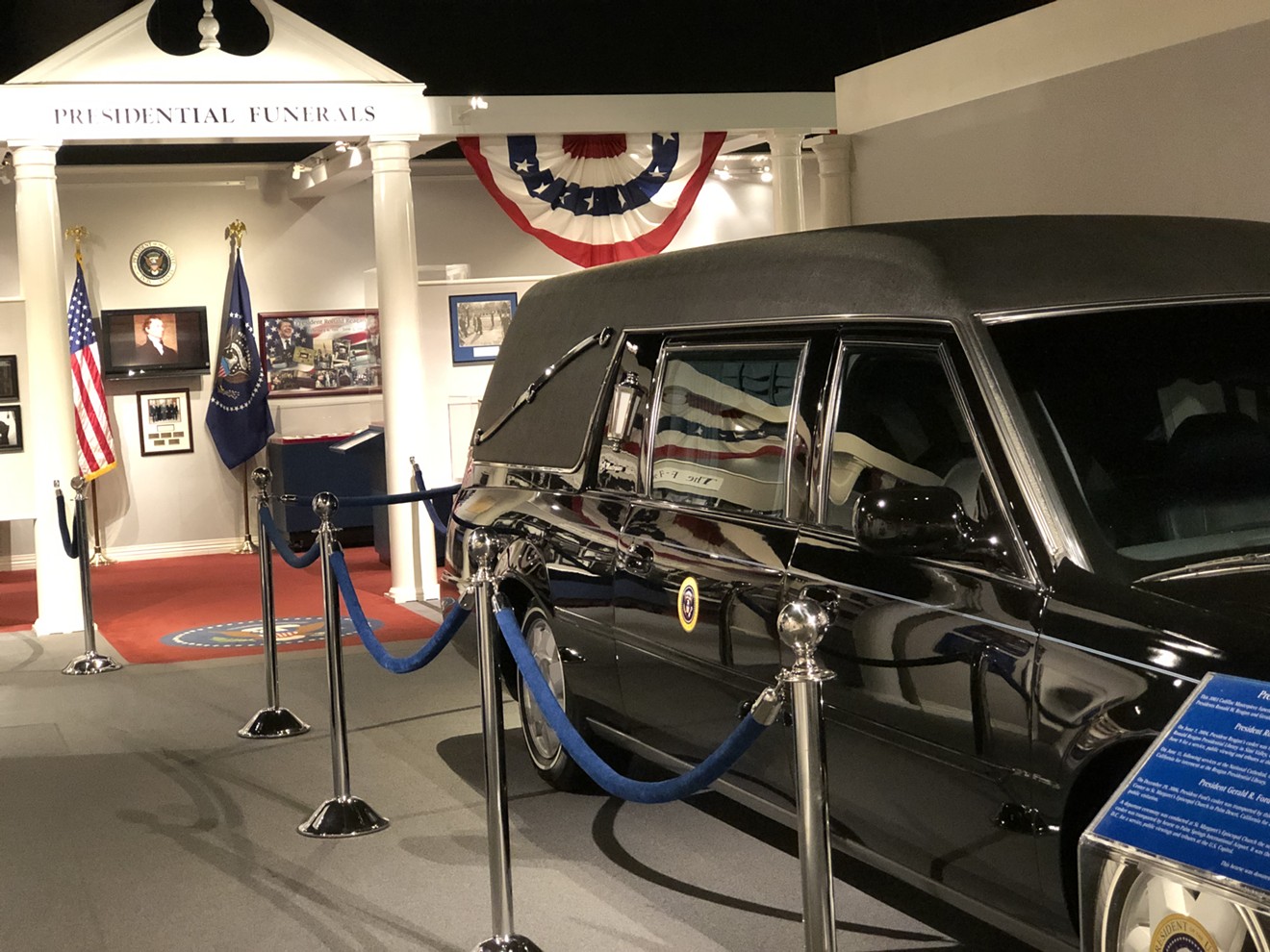While we take this time to embrace the importance and impact of President Bush, it's also a reminder that presidential funerals are something that require great detail and planning. Who better than Houston's own Genevieve Keeney, COO and president of the National Museum of Funeral History (the largest museum of its type), to speak about what goes into these affairs?
"For starters, on average, it takes three to five years to plan a funeral. This one has been planned for quite some time because there are a lot of moving parts to a presidential funeral. From the place of the time of death to the logistics to getting him to Washington D.C., and then once again being transferred to his final resting place," she said.
Typically, the burial place is a storied building the family chooses, Keeney adds. It is often times located near a library or museum previously named in their honor. Bush will rest near the library at Texas A&M University bearing his name.
The planning gets even more detailed as more and more officials get involved.
"There's also a lot of heads of state, first ladies, dignitaries and people who attend the funeral. There are a lot of important people, plus media, that you have to manage. And then there's the public. When you think about it, it takes a lot of planning," she said.
Bush laid in repose both in Houston as well as Washington D.C., which prompted a public procession in his honor as well as an official Day of Mourning.
It was followed by one last hurrah: A train ride from Spring to College Station. Keeney tells Houston Press only two other Presidents have had a train processions: Eisenhower and Lincoln.
"People are seeing right now a historical moment of a President. What an opportunity for us in this day and time to witness a President's funeral in our own city, and then to get to learn more about how other Presidents' funerals happen?"

The artifacts at the National Museum of Funeral History's exhibit date all the way back to President George Washington.
Photo credit by National Museum of Funeral History
Houston's National Museum of Funeral History contains an exhibit that dates back to George Washington, and what a lesson in history it is, especially right now.
"We go all the way back. We have a lot of artifacts from funerals in the museum," Keeney said.
Visitors can pay respects to President Abraham Lincoln while taking in the full-scale recreation of Lincoln lying in repose, peer at an actual lock of his hair(!) and check out an authentic mourning badge worn by a guest at his funeral in 1865. Photo galleries of presidential funerals and original news reports from the museum's archives provide a historical perspective on the chain of events set in motion upon the death of a U.S. president.
They've also been busy collecting items to add to the collection to preserve the history of President funerals and increase the knowledge of our country's past.
"I'm sure we'll be adding President Bush's history when it is complete. President Bush is from Texas, and the museum is honored to showcase some of his future artifacts," Keeney said, while also mentioning the previous items the organization has been saving from the Bush family. "We already have some pieces from Barbara Bush on display, so it's an honor to have that."
Updates to the exhibit are sure to include the lifelong romance between the President and the First Lady.
Keeney says, "I think they set a really good example in dedication and loyalty to each other. They fact they did pass away in the same year...perhaps they were true soulmates. Their life was played out in the public, and they set such a great example for our county in their personal and professional lives."







